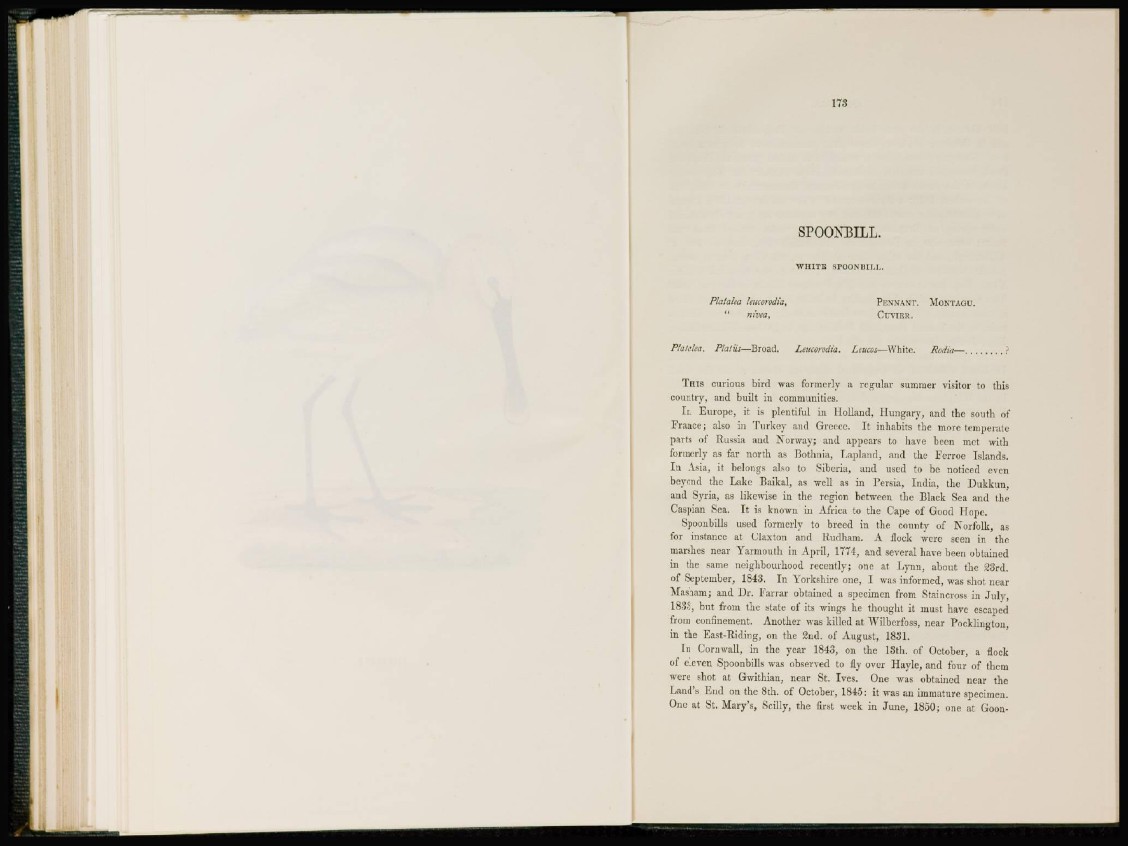
SPOONBILL.
WHITE SPOONBILL.
Platalea leucorodia, PENNANT. MONTAGU.
" nivea, CUVIER.
Platalea. Plat lis—Broad. Leucorodia. Ltucos—White. Podia— .-
THIS curious bird was formerly a regular summer visitor to this
country, and built in communities.
In Europe, it is plentiful in Holland, Hungary, and the south of
France; also in Turkey and Greece. It inhabits the more temperate
parts of Russia and Norway; and appears to have been met with
formerly as far north as Bothnia, Lapland, and the Fcrroe Islands.
I n Asia, it belongs also to Siberia, and used to be noticed even
beyond the Lake Baikal, as well as in Persia, India, the Dukkun,
and Syria, as likewise in the region between the Black Sea and t he
Caspian Sea. It is known in Africa to the Cape of Good Hope.
Spoonbills used formerly to breed in the county of Norfolk, as
for instance at Claxton and Kudham. A flock were seen in the
marshes near Yarmouth in April, 1774, and several have been obtained
in the same neighbourhood recently; one at Lynn, about the 23rd.
of September, 1843. I n Yorkshire one, I was informed, was shot near
Masham; and Dr. Fairar obtained a specimen from Staincross in July,
1833, but from the state of its wings he thought it must have escaped
from confinement. Another was killed at Wilberfoss, near Pocklington,
in the East-Riding, on the 2nd. of August, 1831.
In Cornwall, in the year 1843, on the 13th. of October, a flock
of eleven Spoonbills was observed to fly over Hayle, and four of them
were shot at Gwithian, near St. Ives. One was obtained near the
Land's End on t he 8th. of October, 1845: it was an immature specimen.
One at St. Mary's, Scilly, the first week in June, 1850; one at Goon